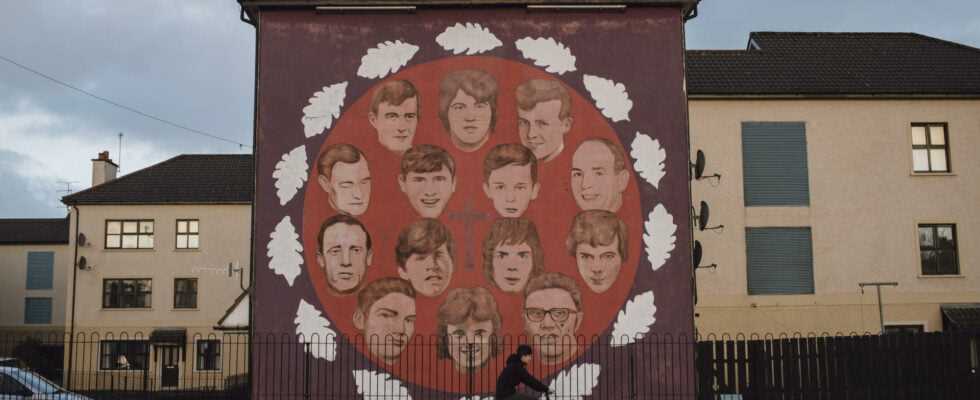InvestigationSymbol of the period of the Irish “Troubles”, Derry (Londonderry for Protestants) is preparing to commemorate the death of the 14 demonstrators killed on January 30, 1972 by British paratroopers.
Along the still intact ramparts of Derry, near the austere Anglican Saint-Columba cathedral, lies the entrance to the Playhouse, a committed theater that has enlivened the cultural life of this big city in the west of the Northern Ireland (called Londonderry by the Protestant community). In his modest home – a few stools, a deserted bar – the director, Kieran Griffiths, took the time, between two rehearsals, this morning in mid-December 2021, to talk about his latest project: The White Handkerchief (“the white handkerchief”). The first takes place on January 30, the 50th anniversary of Bloody Sunday, and will be one of the highlights of the commemorations.
On January 30, 1972, 13 civilians, all residents of Derry, were shot dead by soldiers from a British army parachute regiment in the Bogside, a Catholic ghetto at the foot of the city walls. A 14and victim will die of his injuries a few months later. This massacre was neither the first nor the worst of the “Troubles”, the name given to the United Kingdom to the conflict in Northern Ireland, but it was a crucial episode of this thirty years war (1968-1998) which bloodied the region, opposing Catholics in favor of the unification of Ireland to Protestants loyal to the British crown.
“The play begins with a face-to-face between Peggy Deery, a young woman on the ground, who has just been shot in the leg, and the soldier who fired. Peggy implores him: “Don’t kill me!” I am a widow, I have 14 children,” says Kieran Griffiths. The story is true. Peggy was the only woman shot and injured that day. “The soldier spared her. We wanted to tell this confrontation, then talk about the other victims, celebrate their lives. It is an elegy to reconciliation,” adds the director.
Shot down as they fled
How to evoke this drama without reopening the wounds of the living? Kieran Griffiths, himself a native of Derry, but too young to have known Bloody Sunday, chose a symbol of peace, the iconic white handkerchief that the priest Edward Daly (died in 2016) waved to ask soldiers not to fire when demonstrators tried to shelter 17-year-old Jack Duddy, who was fatally injured. Kieran Griffiths had handkerchiefs reproduced with the initials of the priest (Fr. E. Daly) embroidered as on the original exhibited at the Free Derry Museum, which traces the memory of the massacre. He distributed the replicas to families, most of whom are expected to attend the launch of the coin – “I gave the first to Kate, Jack Duddy’s sister”.
You have 78.4% of this article left to read. The following is for subscribers only.
